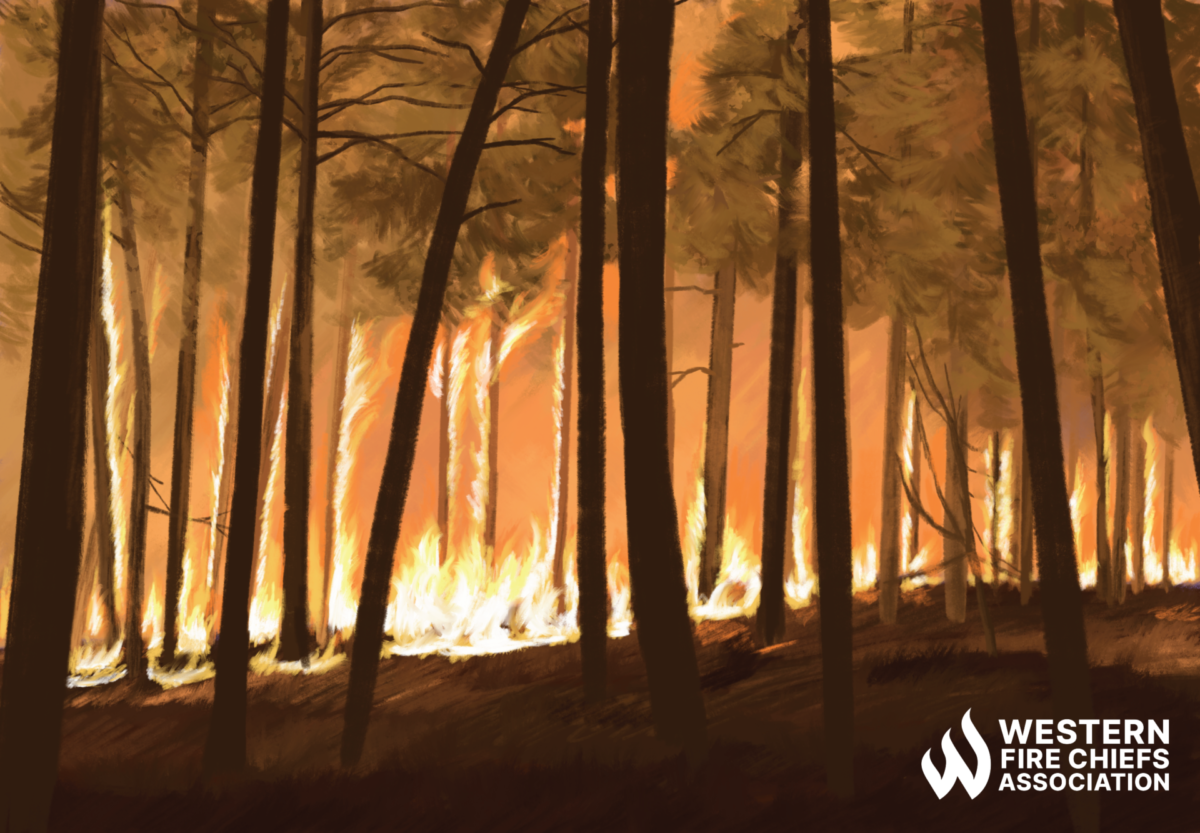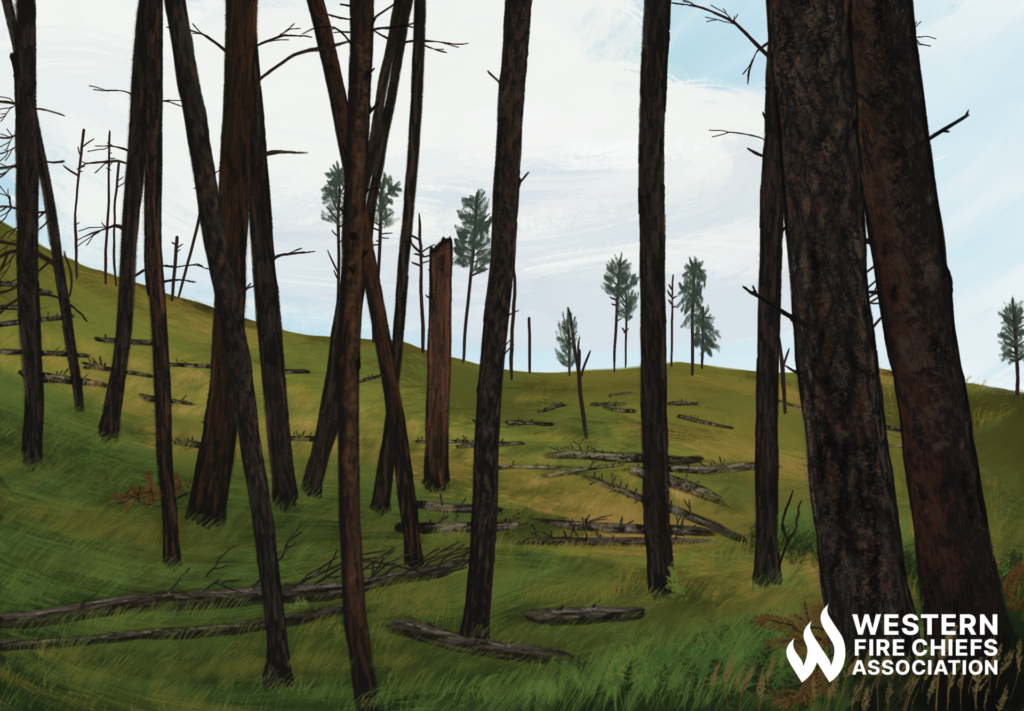Firework Safety Tips: How to Stay Safe
Discover essential firework safety tips to ensure a dazzling display without accidents. Learn how to celebrate responsibly with expert guidance from WFCA.
Find out whether wildfires are good for the environment, natural causes of forest fires and more from the Western Fire Chiefs Association (WFCA).
Published:August 3, 2022
Edited:March 4, 2024

Find out whether wildfires are good for the environment with information from the Western Fire Chiefs Association (WFCA).
Wildfires are a natural part of many landscapes, and several species have evolved to withstand and even rely upon wildfires. In many ecosystems, wildfires are nature’s way of regenerating the earth, allowing important nutrients to re-enter the soil, and creating new habitats for plants and animals to thrive.
However, if wildfires burn for too long, ecosystems can struggle to recover. Additionally, the loss of life, damage to homes and buildings, and impacts to air and water quality can be catastrophic. As climate change increases the frequency and severity of wildfires, there is cause for concern for many species and habitats.
It may seem strange, but smaller fires can actually prevent bigger ones from occurring. This is because smaller, cooler fires can help to remove any potential fuel like dry leaves, logs, and overgrown shrubs. These smaller fires are not hot enough to damage the established trees, but are still hot enough to rid the forest floor of excess fuel that can feed stronger, hotter, and more dangerous fires.
In many ecosystems, fires are a natural part of life, and many plants and animals are adapted to regular burns. Small fires that clear out overgrown areas of heavy brush allow room for a variety of new plants to grow. The assortment of new plants provides valuable food and habitat for many wildlife species, encouraging greater biodiversity.
In forests, low-severity fires can help thin the canopy, allowing sunlight to reach the forest floor. For the soil, the combination of new light, open space, and nutrient-rich ash creates the perfect conditions for new seedlings.
Some species have evolved to depend on fires for their reproduction. For example, species like Jack Pine and the majestic Giant Sequoia rely on fire to be able to release their seeds – meaning wildfires are crucial to enabling new growth.
Another benefit of wildfires is that they can help to kill diseases and harmful insects. The fire helps to suppress the spread of pests and the ash left by the burned vegetation provides a valuable source of nutrients for the remaining trees and plants.
The impact of wildfires on air quality can be immediate as well as long-lasting. The amount of smoke released into the atmosphere can often pose a threat to human health. The fine particles can become lodged in the lungs and place extra stress on the cardiovascular system. These microscopic particles can cause a range of health problems, from sore eyes and a runny nose to chronic heart and lung diseases.1 Wildfires also emit increased levels of carbon monoxide, which can be fatal to humans.
Additional impacts to air quality can occur if the fire comes into contact with buildings, as many modern building materials are highly toxic when burned.
Wildfires can also impact water quality, sometimes with long-lasting effects. The frequency and severity of wildfires in the US have increased in recent decades. Research is now being carried out to investigate the impact of wildfires on the quality of drinking water and on water-dependent natural resources.
Despite its critical importance, the impact of wildfire on water quality is difficult to study due to its unpredictability and lack of pre-existing comparative data.
According to the USGS, what we do know is that wildfires alter the surface soils, decrease infiltration during rainstorms, and accelerate the movement of water, sediment, and debris from the landscape into nearby streams.2 This has a definitive impact on downstream water quality.
In many cases, the ash left behind after a fire can be an important source of nutrients – containing magnesium, calcium, potassium, and phosphorous. However, depending on the intensity and duration of combustion, wildfires can also be detrimental to soil quality. According to the US forest service, high-intensity fires – those that reach 1,200 degrees Celsius or more – do not always result in severe impacts in the soil if their duration is short. But low-intensity fires of just 300 degrees Celsius that smolder for a long time in roots or organic matter and can produce significant changes in the soil.4
Wildfires can have a detrimental impact on soil, both physically and chemically. Physically, fires can induce a breakdown in soil structure, as well as reduce moisture retention and encourage water repellence, all of which can increase susceptibility to erosion. The chemical effects of fires on soils include loss of organic matter, change in nutrient pool cycling rates, and a loss of elements to the atmosphere. Fires can also alter the biological properties of soil due to the loss of microbial species, invertebrates, and plant roots.5

As climate change increases the frequency and severity of wildfires around the world, the damaging effects to the environment are also being exacerbated. The United Nations has recently assessed the global risk of catastrophic wildfires. They conclude that as climate change continues to accelerate, more of the world will burn, with devastating effects on human health and biodiversity.6
Wildfires and climate change are inextricably linked. As their effects worsen, a vicious cycle is emerging. The risk of wildfires is rising globally due to climate change, but the wildfires themselves are also contributing to worsening climate change. As wildfires burn through trees and plants, they release carbon dioxide into the air, which contributes to the greenhouse effect.
This harmful cycle illustrates the importance of human intervention in controlling both climate change and wildfires. Reducing fire risks, helping communities become more resilient to wildfires, and curbing climate change will be crucial in helping to protect our environment and ecosystems now and for future generations.
Discover essential firework safety tips to ensure a dazzling display without accidents. Learn how to celebrate responsibly with expert guidance from WFCA.
Explore the role of AI in wildfire prediction with guidance from the WFCA. Learn how advanced algorithms and data analytics enhance early detection and response.
Empower your community with a detailed guide on creating a Wildfire Protection Plan. Explore crucial steps and strategies with expert guidance from the WFCA.